








TheodoreRooseveltwasaNewYorkerbychance,aNorthDakotanbychoice, andAmerica’soriginalconservationist.Onehundredandfortyyearslater,the goodworkT.R.foughtforisthesamegoodworkJLGandSnøhettaarefighting fortoday.EmergingfromtheBadlandsofWesternNorthDakota,theTheodore RooseveltPresidentialLibraryisdestinedtobearesolution—a“livingbuilding” thatmakesmoreenergythanitconsumes,purifiestheairwithnetpositivecarbon, restoresprairieecology,achieveswaterbalance,andrenewswaterresources. In2026,theLibrary’simmersiveexperiencewillinviteeveryonetobepartofthe movement,demonstratingthepowerofsustainabledesignonaglobalscalefirmly rootedinMedora,NorthDakota.AsT.R.mightsay,thisisgoodworkworthdoing.

In 1983 a young Moorhead architect believed that open and honest communication with clients was vital to every project, and that each project deserved to reflect the uniqueness of the client while solving their problem in creative, interesting ways.
More than 40 years later, that architect—Michael J. Burns, AIA, CID, NCARB—still believes and practices those same philosophies. And so do his colleagues at Michael J. Burns Architects (MJBA). The team has preserved and improved this mission over its tenure, making it one of the top firms in historic preservation and adaptive reuse in our region.
MJBA serves clients in the public and private sectors, working on a wide range of facilities, including schools, city and county buildings, mixed-use, multifamily housing, assisted living, hotels and more. And their work hasn’t gone unnoticed.
“I’m quite proud of our team at MJBA. Some longtime employees such as Kerry Peuser, AIA have been here since 1989,” Burns said. “Everyone works well together, and we have a cohesive group.”
Burns and his team have not only made preserving our community’s historic structures, but also giving back to our community, a priority. He’s served on many local/civic boards, the State Historical Society Review Board, the City of Fargo Planning Commission and the Fargo Historic Preservation Commission.
Here’s how it started and how they’ve found success along the way.
As my own boss, I knew I could control communication with clients and contractors. I had a well-developed technical background in historic preservation/renovation work and I felt we had a competitive edge over other well-established firms in the area.

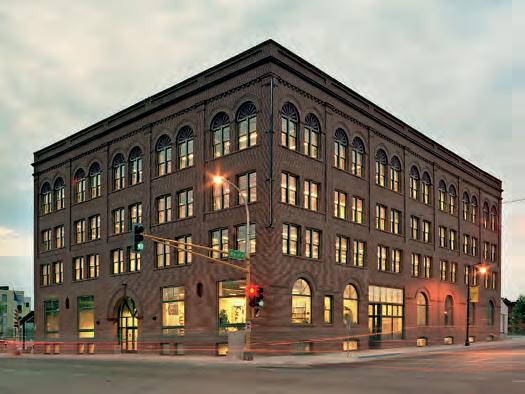
The most notable project we’ve had the privilege to work on was the historic renovation of the Old Northern School Supply Building, known as NDSU Renaissance Hall. The building successfully compiles historic preservation, adaptive reuse, LEED certification and collaboration with the public and private sectors. This building was the first Certified LEED project in North Dakota. We earned several awards for it, including local historic recognition, a state Professional Honor Award, and a National Trust for Historic Preservation Honor Award.
Our firm never declared a particular design style. I was more interested in developing a style that reflects the client’s uniqueness and solves their problem in creative, interesting ways. This continues to be our approach and philosophy today.
This is an ongoing effort as technology changes quickly and oftentimes forces equipment changes to stay abreast with the architecture/engineering industry. Many of the changes have been good and have certainly enabled us to provide sophisticated imagery and presentations for clients.
Our firm has continued to demonstrate that you can find new ways to use old buildings that may initially seem useless. We’ve been blessed with the gift of perceiving a completed project before starting on it and have used that talent to encourage people to reevaluate the worthiness of their locale and buildings.

We understand and know that communication is always a challenge, so the more we listen to owners, clients, and stakeholders throughout the process, the better equipped we are to make the best design decisions.
It’s all about the client. I believe architects must be willing to shift gears and take a different look at things if the client and other circumstances demand it. If they accept some of our suggested creative ideas along the way, that’s frosting on the cake. I also feel it’s our professional responsibility to help clients see greater potential in their projects than they initially believe. That’s what I think is the fun part.
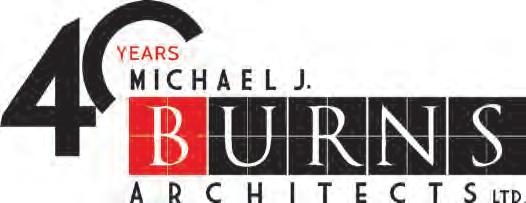


Our extensive and lengthy experience with building reuse and historic preservation. We practice as a studio, enabling every team member to actively offer ideas on firm planning, marketing project design, and production. We use the latest technology and graphics, such as CAD, renderings, fly-throughs, models, mock-ups and web-based meetings. Finally, we strive to build and maintain strong relationships with our clients and work hard to keep them. We enjoy our repeat clients who continue to put their trust and faith in us.
We want to continue to improve things. We want to ensure that we strive for better solutions and not restrict ourselves because of preconceived ideas or expectations. All clients deserve the best we have to offer. The success of the firm rests entirely on our team. There isn’t one person who stands above the rest, including myself. We work hard to do the right thing.




Revolutionizinghealthcareenvironments withafusionofinnovativetechnology andpatient-centricdesign.

Here’swhatmakesthese leadersstandout:
Theyfocusonmorethan justphysicalhealth.
Truewell-beingisaboutthewhole person.Social,emotional,financial, communityandprofessionalwell-being matterjustasmuchasphysical. Bypromotingandenablingpositive dailyhabits,leadingcompaniesare ensuringthatemployeesfeeltheirbest wellintothefuture.
Theymakewellness acollectiveeffort. Individualizedwellnessprogramsare isolatingandoftentargetemployees thatarealreadyengagedinhealthy activities.Businesseswholeadin wellnessfindapartnertoadviseand workalongsidethem,transforming companyculture.
We’resettohighlightthebest
AtBlueCrossBlueShieldofNorthDakota(BCBSND),webelieve well-beingcanbecomeafundamentalvalueofanyorganization lookingtobuildathriving,productiveworkplace.Through collectiveeffort,leaderscantransformtheirworkplaceculture.
a better chance to thrive



Sohowcanyoumakewell-beingapartofyourculturein2024?
Overthecourseoftheyear,we’llbringyouleadersfromacross NorthDakotawhohavedonejustthat,andhavetakenworkplace well-beingfromanotherconcepttoapartoftheireverydayculture. We’llsharetheirjourneysandadvicetohelpyoutakeworksite wellnessfromconcepttoculturethisyear.

PresidentandCEO,BCBSND
their employees a priority, so they have
rises,absenteeismdropsandmoraleimproves.But,promotinga cultureofwell-beingismorethanjustfollowingaone-size-fits-all program.Yesterday’swellnessprogramsaren’tenoughfortoday’s employees.Withchronicillnesses,mentalhealthcrisesanda disengagedworkforceontherise,workplacewellnessprograms needadifferentapproachforengagement.
Learnhowtoelevateyourworkplacewell-being

12
FOCUSING ON THE FUTURE OF
THREE STEPS TO AVOID PITFALLS AND UNCOVER BUSINESS OPPORTUNITIES IN 2024 BY AMANGE AWARE
KRAUS-ANDERSON EXPANDS REGIONAL CONSTRUCTION FOOTPRINT, OPENS NEW OFFICE IN FARGO SUBMITTED 22
CORNERSTONE BANK TO BUILD IN RUGBY SUBMITTED
DIGIKEY RECEIVES GOVERNOR’S INTERNATIONAL TRADE AWARD SUBMITTED
18
DESIGNING OUR COMMUNITIES BY CARRIE MCDERMOTT
24 TAXES
CHANGES IN TAX FRAMEWORKS AFFECT THE BOTTOM LINE BY LOIS JOSEFSON

ON
(L-R) MICHAEL MCLEAN, AIA, LEED AP, PRINCIPAL, TOM BEHM, DIRECTOR OF CONSTRUCTION SERVICES AND JESSI LARSON, NCIDQ, LEED AP SENIOR INTERIOR DESIGNER, ARE PHOTOGRAPHED IN JLG’S DOWNTOWN GRAND FORKS OFFICE.

GEORGINA STANLEY-WOIDYLA
GEORGINA STANLEY-WOIDYLA
JOINS APEX ENGINEERING GROUP
ST CLOUD, MINN. • GEORGINA STANLEY-WOIDYLA HAS JOINED THE APEX ENGINEERING GROUP TEAM IN ST. CLOUD AS A SENIOR TRANSPORTATION ENGINEER. SHE IS A PROFESSIONAL ENGINEER LICENSED IN MINNESOTA AND NORTH DAKOTA WITH 21 YEARS OF EXPERIENCE IN THE TRANSPORTATION SECTOR. GEORGINA IS WELL-VERSED IN RURAL AND URBAN DESIGNS FOR CITIES, COUNTIES, AND MNDOT. SHE HOLDS A BACHELOR’S DEGREE IN CIVIL ENGINEERING FROM THE UNIVERSITY OF MINNESOTA TWIN CITIES.
VISIT WWW.PRAIRIEBUSINESSMAGAZINE.COM TO SEE THESE AND OTHER NEW HIRES, PROMOTIONS AND AWARD WINNERS IN THE REGION.
Choosingapartnertohelpyourfinancialinstitutionachievesuccessisabig decision.Youneedatrustedadvisorwhoisexperienced,attentive,andinvestedin helpingyouaccomplishyourgoals.BradyMartz&Associateshasadedicatedteam ofexpertswiththecapacitytoassistyouaslittleorasoftenasyouneed.
Thefinancialinstitutionssectoriscomplexandever-changing.Banksandcredit unionsareconstantlyimpactedbyregulatorychanges,updatedaccounting standards,andnewlegislation.Oftentimes,keepingupcanseemlikeanimpossible task.BradyMartzhasindustryexpertsreadytomakelifeeasierforourclients,witha friendlyapproachtofinancialandbusinessadvisoryservices,craftingpersonalizedsolutionstailoredtoyour individualneeds.Ourpriorityistogettoknowyouandtheinsandoutsofyourinstitutiontobetterprepare youforboththechallengesandopportunitiesofthefuture.
 RyanBakke,CPA FinancialInstitutionsPractice SegmentLead Shareholder
RyanBakke,CPA FinancialInstitutionsPractice SegmentLead Shareholder
“AtBradyMartz,weprideourselvesondeliveringtailored,professionalservicesthat catertotheuniqueneedsofeachclient.Frommeticulousfinancialstatementaudits andstrategicta xplanningtoexpertregulatorycomplianceconsulting,ourextensive experienceinservingbanksandcreditunionsensuresthatwehavetheprecisesolution you’reseeking.”
ConnectwithRyantodaytodiscussyourjourneyto abrighterfinancialfuture.
24WestCentralAve. Minot,ND58702 701-852-0196


Around the region, we see changes in our communities as old buildings are renovated and redesigned while new construction goes up. We drive on roads and bridges that have been maintained and repaired, and benefit from infrastructure like water treatment plants and storm sewers. But what issues do those who plan and design these concepts have to overcome?
Our February issue asks just that of our region’s architects and engineers. They give insights on how they’ve adjusted since the pandemic, dealing with everything from new ways to communicate with teams and clients to ongoing supply and labor shortages. The cost of those supplies has continued to rise, which means cost-effective alternative solutions and pared-down designs may be needed to keep a project within budget and being completed on time.
Jim Tyler, principal and vice president of EAPC Architects Engineers, Bismarck, gave an example of just how much those prices have increased. “A project costing $275 per square foot before COVID could now be estimated at around $400 per square foot,” he said. To offset the higher costs, more efficient spaces can be designed to reduce a project’s square footage, leading to lower bottom lines.
This month we also reached out to banking and finance leaders to get advice on what areas businesses should be considering in the new year. Zach Miller, innovation officer and digital payment strategist with Bravera Bank, Dickinson, North Dakota, said digital channels are a primary vessel for growth, to maintain customer loyalty and to provide a relationship-focused customer experience.
“As a community bank, we must constantly evaluate, enhance and invest in digital and payments infrastructure to reduce friction for customers that gravitate toward using digital channels,” he said.
Chris Wolf, Northern Valley market president at Alerus, Grand Forks, said setting an annual budget and determining monthly cash flow projections are musts for every business.
“These allow you and your banker to assess your current working capital and plan from there for the year ahead,” he said.
Guest columnist Amange Aware, a commercial banker with Wells Fargo, offers steps to avoid pitfalls and uncover business opportunities in 2024.
Tax season has begun, which means area accountants and financial advisers are busy. Area professionals and state leaders in the industry talk about new tax laws in the Dakotas and Minnesota that businesses need to be aware of.
Enjoy reading about these topics and more in this month’s edition, and be on the lookout for the March edition, where we’ll feature our 2024 Top 25 Women in Business!
Best wishes,
Carrie McDermottI look forward to hearing from you at cmcdermott@prairiebusinessmagazine.com or 701-780-1276.
Smallenoughtounderstand localneeds.Largeenoughto accomplish bigthings.Asyourlocalsupercommunitybank, StarionBankisdedicatedtostandingbesideyouand makingadifference in every communityweserve.















Financial advisers drive the prosperity of the communities they serve. They offer personalized approaches that respond to the needs of the economic climate. Like individuals, businesses should set attainable goals that can be reached and provide success.
The region’s industry experts have offered recommendations on key areas businesses should focus on this year.
“With 2024 in full swing, regional businesses stand to benefit immensely from focusing on innovative payment-processing and treasury-management products that help maximize interest and minimize expense,” said Kristine Lunde, senior treasury management sales officer with Gate City Bank, Fargo. “In today’s rate environment, it’s especially important for businesses to visit with a treasury management consultant who can help automate cash flow processes, which leads to paying down high-interest loans when there’s excess liquidity, or ensuring excess liquidity is earning interest.”
Building a strong brand presence will help retain customers and attract new ones, spurring business growth, she said.
Zach Miller, innovation officer and digital payment strategist with Bravera Bank, Dickinson, North Dakota, said digital channels are a primary vessel for growth, to maintain customer loyalty and provide a relationship-focused customer experience.
“To aid in that focus, we will enhance our business online banking platform in 2024. Areas of focus will include payables, receivables, liquidity management and fraud prevention. These enhancements will deliver an improved customer experience for our business customers and allow them more flexibility to digitally manage their cash flow,” he said.

In the banking and finance realm, there’s been a shift toward consumer digital services like Zelle, online deposit account opening, loan applications and even online chatbots.
“As a community bank, we must constantly evaluate, enhance and invest in digital and payments infrastructure to reduce friction for customers that gravitate toward using digital channels. Strong digital services backed by a team of dedicated customer care representatives will continue to strengthen our customer relationships in the years to come,” Miller said.


Chris Wolf, Northern Valley market president at Alerus, Grand Forks, North Dakota, said setting an annual budget and determining monthly cash flow projections are musts for every business.
“These allow you and your banker to assess your current working capital and plan from there for the year ahead,” he said.
Considerations should include: Will you need to increase your line of credit? Are you projecting excess capital that you want to inject back into your business? A good banker will help you evaluate all of your options to determine a path forward.
“Everyone wants to know what interest rates will do in 2024. The old saying, ‘hope for the best, plan for the worst,’ is solid advice when it comes to financial planning, particularly with regard to interest

CONTINUED FROM PAGE 13
rate changes in 2024,” Wolf said. “No one knows exactly what will happen, so we are working with clients to plan for various interest rate scenarios and strategize potential impacts to their bottom lines. We anticipate this will be a continued focus throughout the year.”
Experts also advise businesses to work with a banking team that specializes in business finance.
“When it comes time to secure a loan, it’s important for your banking team to have the expertise and desire to help you understand the complexities of various financing choices, from fixed rates to variable rates and swap options,” Wolf said. “Experienced business bankers can also help identify local and state finance programs that may benefit your business.”
Greg Mastrud, market president with First International Bank & Trust, Fargo, shared two attainable habits that businesses should put into practice.
“Digital and human innovation is key,” he said. “It’s no secret that the future of countless industries lies in cyberspace.
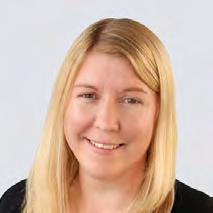

But crucially, customers don’t only want digital experiences. Look at the resurgence of vinyl records! Really understanding your customer base and their preferences is important.”
Offering a healthy mix of digital convenience with the human touch will allow a business to build strong connections with customers on their terms while staying relevant in a competitive market, Mastrud said.
The second habit is to bolster your relationship with your customer base, he said.

“In my time at FIBT, I’ve learned that a great bank is about so much more than ‘who has the best rate?’ Sure, we keep our rates competitive – but our organization would not be where it is now without the power of great relationships. A fulfilling banker-to-business relationship, built with trust and care over time, is a boon to any business owner. It helps your business thrive and grow – and can help protect you from unforeseen pitfalls. I encourage you to deepen your relationship with the banker you trust in 2024!”



AtUlteig,wetakeoncomplexprojects,butourmissionissimple:deliver reliableinfrastructuresolutionsthatserveasthefoundationforcommunities tothrive.IntheLifelineSectors® ofPower,Renewables,Transportation andWater,ourapproachisrootedindecadesofthoughtfulengineering andadeepcommitmenttoenhancingtheplaceswherewework.Every energyproject,roadandwatersystemisatestamenttopractical, sustainableprogress.We’renotjustengineers;we’repeopleinvestedina sharedfuture. STARTYOURNEXTPROJECTWITHULTEIG.

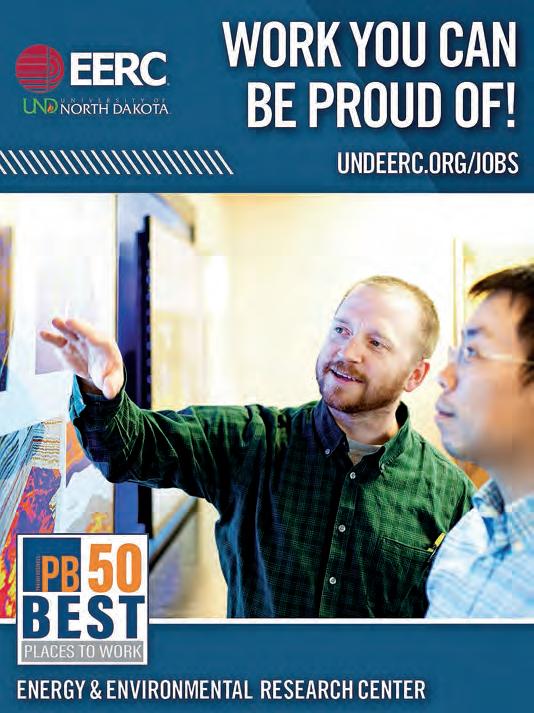

Now hiring for a growing company


We’re a month into the new year, and as a commercial banker, I’m channeling my inner optimist. Sure, interest rates are at the highest since 2000. Global conflict is on the rise. Artificial intelligence feels like a bit of a wild card. None of that is within our control.
But as business leaders in the Dakotas, we can dictate how we prepare to take advantage of new opportunities in the year ahead. And I have three simple axioms to help you do that. But first, let’s step back to hear what business leaders nationwide are thinking right now.

Recently, PwC released their Pulse Survey Results indicating that U.S. business owners express more optimism about the economy than a year ago (recession concerns have dropped by 18% since last October). However, leaders continue to reference concerns about rising costs, managing labor and resources, reducing risk, and improving efficiencies.
Certainly, these concerns merit attention, but from a banker’s perspective, 2024 could be the chance to develop a business plan that withstands economic headwinds. Incorporating these three steps into your business plan can help better position your business for growth.
Too often, business owners bank on luck and pluck. They believe they can beat the market. That they can wait out the interest rate environment. Or that if they are strategic enough, it won’t apply to them. Unfortunately, these predilections, while understandable, are often fruitless, and always a distraction. With current macroeconomic, political, and social conditions, there are many distractions.
However, these factors are outside of individual control. While it is important to be aware of the environment, it is even more important to avoid allowing it to distract from your focus. By acknowledging the external impacts relevant to your business operations while focusing on products and practices, business owners can favorably position themselves by shifting their mindset to one of adaptability rather than one of playing defense.
By focusing on the business at hand, providing quality products and services, improving the balance sheet, and increasing efficiency, business owners may be better positioned to address the needs of their companies rather than staying in a constant reactionary mode.
Growth, advancement, and progression are all results of action. And, after the pandemic-induced business hiatus, now is the time to take action.
While every business leader wants to maintain and execute her or his own plan/strategy, companies are better served when their management team is surrounded by trusted advisors.
Businesses should seek input from their accountants, bankers, attorneys and other trusted advisors to ensure decisions are made with the greatest consideration. These advisors should also be able to help business owners identify yellow flags and their potential implications.
In recent years, low-interest rates and excess liquidity made it easy to ignore inefficiencies or balance sheet deviations. Businesses should consider taking decisive action to address any area that could be a risk to their capital, productivity, or efficiency. The cost of doing business has increased and an income statement should not be considered the only indicator of a company’s health.
As companies position themselves to weather economic volatility, it is important that they regularly stress test possible outcomes and scenarios to ensure the viability of their business. According to PwC, nearly 50% of those surveyed cite the possibility of a reduced demand for goods or services as a top concern. Through regular stress testing, businesses can address different scenarios that will allow for planning and action.
Inaction in today’s environment is potentially detrimental. Act now to make the most of your company’s potential.
The opportunities to improve efficiencies and favorably position your business will be considerable, especially through digitization, cash flow enhancement, and capital investments. Here are some immediate fiscal management considerations:
• Digitize: Make choices that allow for the best allocation of resources. Digitizing your cash flow management and payments process may allow you to allocate people hours to grow your business.
• Improve cash flow: Strategically timing when money is going out and coming in can make a difference not only to your cash flow, but to potential interest earnings.
• Pounce on growth: Companies that have been strategic and carefully maintained their balance sheets may be able to reap the benefits with opportunities for acquisitions and growth.
In 2024, business owners have the chance to not only conduct business, but to excel. During a time of economic uncertainty, this year is certain to be pivotal for many businesses. That can feel daunting, but those who stay focused, proactive and analytical can stack the odds in their favor.
Amange Aware is Wells Fargo’s Commercial Banking market executive for North Dakota, South Dakota, Montana and Wyoming. He is based in Sioux Falls and can be reached at Amange.Q.Aware@wellsfargo.com.

 BY CARRIE MCDERMOTT
BY CARRIE MCDERMOTT
Increasing construction costs is one of several challenges architecture and engineering firms continue to address since the COVID pandemic began. Construction costs have increased year-over-year since 2020, depending on the project type and location. More than 82% of construction materials have experienced significant jumps in cost over the past three years, with an average increase of 19%, according to a construction materials report from Gordian, a construction cost data tracking firm.
Jim Tyler, principal and vice president of EAPC Architects Engineers, Bismarck, said there are challenges getting projects started due to those elevated costs and interest rates. If a project is initiated without a
full understanding of the recent surge in expenses, it can lead to cancellations or downsizing, which incurs additional costs in the redesign.
“This increase is significant compared to the ‘normal’ rise of approximately 15-20% over the same period. Additionally, the cost of borrowing has climbed from around 3% to a mid-range of 7%, effectively doubling the expenses,” he said.
“Given that some owners undertake projects every four years, there’s a stark contrast in expenses pre- and post-COVID. For instance, a project costing $275 per square foot before COVID could now be estimated at around $400 per square foot. This substantial shift compels owners to reconsid-
er the timing and scale of their projects,” Tyler said.
EAPC Architects Engineers is adopting several strategies for effective construction cost management.
“We compile the most current construction costs to educate owners about the actual expenses. To achieve this, we engage in regular consultations with industry partners, including construction managers and suppliers, to gain a comprehensive understanding of the costs. When consulting with owners at the beginning of a project, we are equipped with the latest information to provide accurate total project cost estimates reflecting the current construction pricing climate,” Tyler said.

Another method the firm uses is phasing projects to speed up material orders and provide significant alternate bids.
“If a project exceeds the budget, we can remove predefined portions of the project to align with financial constraints. An integral strategy we use is applying LEAN Design principles in all our designs, guided by a LEAN Black Belt in our Business Excellence team, which is particularly beneficial in health-care design,” he said. “These principles aid in creating more efficient spaces and reducing square footage, leading to lower costs.”
Supply chain issues are getting better but still require creative solutions. For example, shortages affecting water, wastewater
and stormwater projects create uncertainties in obtaining pipe, equipment and treatment chemicals.
Professional Engineer Brian Bergantine, project quality director with AE2S, Fargo, said navigating those supply chain slowdowns demands a strategic approach tailored to distinct phases of project development and clear communication is essential.
“The bidding phase is a key stage where AE2S helps our clients mitigate supply chain hurdles.
Transparent communication with our clients is paramount as it helps them understand challenges, explore alternatives, and ultimately make informed decisions. Engaging clients in discussions about risk
mitigation strategies fosters trust and reaffirms our commitment to their project. By involving them in these discussions early on, we reinforce our dedication to delivering successful projects despite supply chain uncertainties,” Bergantine said.
Early planning for critical equipment, such as motor control centers, pumps and specialties, is a valuable tactic, he said.
“Collaborating with vendors and clients to secure these long lead time items significantly averts scheduling domino effects that can be caused by equipment unavailability,” Bergantine said. “By identifying equivalent equipment or products while

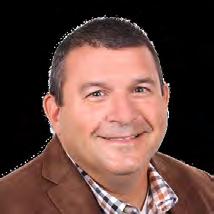
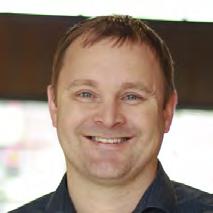


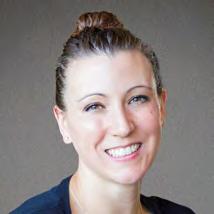
CONTINUED FROM PAGE 19
JIM TYLER, PRINCIPAL AND VICE PRESIDENT OF EAPC ARCHITECTS ENGINEERS, BISMARCK
BRIAN BERGANTINE,
PE, PROJECT QUALITY DIRECTOR WITH AE2S, FARGO TOM BEHM, CCCA, CDT, CSI, DIRECTOR OF CONSTRUCTION SERVICES WITH JLG ARCHITECTS, GRAND FORKS
conducting a comprehensive life cycle cost analysis, we empower clients to make informed decisions. This also helps encourage competitive bids and enhances the likelihood of awarding the entire project.”
Tom Behm, CCCA, CDT, CSI, is the director of construction services with JLG Architects, Grand Forks. He said various challenges the industry has faced since the pandemic have made the firm more efficient in the pace and level of communication.
“Collaboration has always been important, but now we really zero in on planning ahead to forecast and overcome potential supply issues. Part of that process is keeping our fingers on the pulse of what is happening with real-time tracking of the industry and suppliers, then being able to pivot quickly and secure a solution,” he said.
That may mean ordering mechanical and electrical units in advance, putting together construction packages earlier and diving deeper to help the design team select products and provide comparable options, Behm said.
BENITA CROW, SENIOR PROFESSIONAL ENGINEER OF SEH, ST. PAUL, MINN
CHASE KRAMER, AIA, ARCHITECT AND DIRECTOR OF DESIGN AT TSP, INC. IN SIOUX FALLS, S.D.
EMILY JOHNSON, CHIEF PEOPLE OFFICER AT KLJ ENGINEERING, BISMARCK
“Our interior designers, construction services and estimators have done a great job staying ahead of challenges and finding alternatives to ensure project design, sustainability, and budget goals are met. When we put together budgets, there are now additional factors and scheduling considerations beyond just the cost of material. Our solution has been to really stay informed, plan early, overcommunicate, and make sure every detail is a collaborative decision with owners, contractors, and stakeholders,” Behm said.
Offering climate-resistant, sustainable solutions to clients while reducing the firm’s carbon footprint is a mission at Short Elliott Hendrickson Inc. (SEH). Senior Professional Engineer Benita Crow, at the company’s St. Paul, Minnesota, office, said the company infuses sustainability into aspects of its work, which “defines a project’s objectives that are not only eco-friendly but highly functional and cost-effective.”
“We prioritize providing our clients with climate-resistant, sustainable solutions, which involve practices such as safeguarding and revitalizing green spaces, incorporating eco-friendly materials into designs, promoting water reuse, enhancing air and water quality, reusing and retrofitting existing structures for improved energy efficiency, and even integrating renewable energy sources to bolster the resilience of power supply and distribution systems,” she said.
“To ensure our team remains at the forefront of sustainable design, our employees consistently educate themselves through participation in and accreditation with organizations such as Leadership in Energy and Environmental Design, Green Globes Professional, and Envision Sustainability Professional. Sustainability is truly intertwined into every aspect of SEH – from our people to our projects to the impact we can make together to shape a resilient and responsible future,” Crow said.
Ongoing technology changes and improvements are another area firms need to stay on top of to remain competitive and help them work more efficiently and profitably.
Chase Kramer, AIA, architect and director of design at TSP, Inc. in Sioux Falls, South Dakota, said although nothing can replace good design thinking, if there’s a tool that can help gather consensus or coordinate different disciplines faster, it gives firms the ability to produce more work that’s better and more efficient.
“AI is something everyone is starting to see crop up in their professional spheres, and the AE sphere is no different. As director of design for TSP, I’m leading the charge of utilizing AI to make our design process more efficient,” Kramer said. “Tools like LookX.ai and Midjourney help to create inspirational imagery that can act as a springboard for the iterative design process, allowing clients to establish vision and ‘mood’ boards early in the design process – before anything that looks like a building is fleshed out.”
The firm also takes an internal approach to test the latest visual software offerings.
“The faster we can bring a client out of the floorplan and into a walkthrough experience of a building model, the sooner we can get buy-in and the quicker we can make decisions and get a final deliverable to the client,” he said. “As a multidisciplinary firm, we also make sure our engineers are in on the fun, having them jump into tools like Enscape to do visual 3D clash detection (identifying if two design elements take up the same space) and coordination with their systems and fixtures. Nothing beats walking a facility manager through their building, showing them exactly where/how they can access each piece of equipment.”
Since the start of the pandemic, another challenge is finding ways to allow employees to effectively and safely work remotely and offer a better family lifework life balance.
Emily Johnson, chief people officer at KLJ Engineering, Bismarck, said the company’s employee-owners appreciate the flexibility to maintain options when it comes to where they work.
“While not all roles are conducive to a remote setting, many people continue to find a better balance in working either remotely or in a hybrid-remote setting (splitting time between the office and a home office). Our culture prioritizes the well-being of our team members by offering various work arrangements, including flexible schedules, hybrid, in-office and remote options,” she said.
A challenge to having remote workers is finding creative ways to connect and build engagement. KLJ has a full team working hard to complete employee wellness checks by reaching out to remote workers to see how things are going, she said.
“It connects people to those outside of their traditional workgroups and lets them know we care,” Johnson said.
“The ability to work remotely creates opportunities for our employee-owners to work on exciting projects in many locations, thus keeping their work interesting and engaging. Continuing remote work options allows us to build and maintain important relationships, encourage a positive work-life balance, and promote a strong sense of rapport and engagement. The combination of remote options, with our more than 26 locations, we look to find something that works for everyone,” she said.




To meet the construction growth in the Upper Midwest, Kraus-Anderson (KA), one of the nation’s premier general contractors and construction managers, has opened a new regional office in Fargo, North Dakota, located at 1100 NP Avenue.
The office’s regional director is Ross Wilmes, who serves as Kraus-Anderson’s vice president and director of operations for North Dakota. He is an industry veteran with a thorough understanding of the region, having built solid relationships with regional and local owners, architects, engineers, subcontractors and suppliers over the last 25 years. His project management
experience includes working with schools, healthcare, higher-education, state and local governments, Native American tribes and the military, as well as with the private sector.
In the past five years, KA has delivered dozens of notable projects in the Fargo area totaling nearly $300 million. Clients include North Dakota State University (NDSU), the City of West Fargo, Coborn’s, Hornbacher’s and Dakota Carrier Network. The company is currently building NDSU’s Peltier Complex and is in preconstruction planning for NDSU’s Field Soils Lab Facility, which will be KA’s seventh project on the campus since 2017.
Al Gerhardt, Kraus-Anderson’s president and chief operating officer says the company is well positioned to manage huge opportunities in the pipeline, which are in excess of hundreds of millions of dollars.
“KA is no stranger to managing construction projects in North Dakota,” said Gerhardt. “Our expertise in education, healthcare and commercial market sectors and our unique strengths in preconstruction and facilities assessment are in demand throughout the region. We are excited to open our new office and eagerly anticipate forging deeper connections with clients and with the growing regional communities.”
Cornerstone Bank has purchased land in Rugby and construction on a new bank building will begin this year. Investing in a new community is a significant milestone for the Cornerstone Bank organization, but not one that’s new to them.
“Our vision is to be the experts people turn to when they are making important decisions about their money. When we are able to welcome an experienced team and offer accessible expertise to a new area, it’s an exciting opportunity,” said Cornerstone Bank President/CEO Jeff Thomas.
Cornerstone Bank joined the Rugby community in 2022 with a team of bankers bringing decades of experience. Starting out in a leased space, the bank’s priorities were to welcome the team and start providing accessible financial expertise to the area. The team quickly outgrew their cozy quarters.
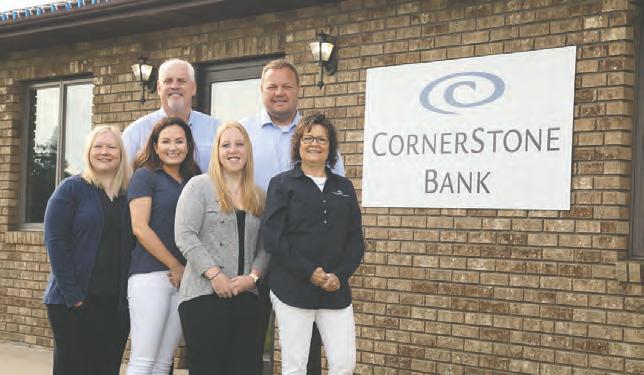
“We are ready to expand to a bigger space in a more visible location,” Cornerstone Bank’s Rugby Market President Kyle Nelsen said. “Most importantly, we are committed to our customers in Rugby and the surrounding communities. Our new building will
allow us to grow with our customers well into the future,” he said. Cornerstone Bank’s future location in Rugby will be directly east of Home of Economy, adjacent to Highway 2. Cornerstone Bank has roots back to 1936 and continues to grow.






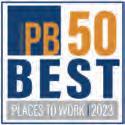



Taxes and operational strategy are integrally related factors affecting business bottom lines. The respective tax regimes of North Dakota, South Dakota and Minnesota all changed in 2023 for application in some instances immediately and in others effective commencing in 2024.
The Tax Foundation, a nonpartisan tax policy 501(c)(3) nonprofit, prepares annual comparisons of tax impact on businesses in each of the nation’s 50 states. Its 2024 State Business Climate Index takes into consideration: corporate, individual income, sales, property and unemployment insurance taxes when ranking the states. Of the three states, South Dakota ranks most favorably at second on the list, North Dakota is 17th and Minnesota is 44th.
Business structures vary and are taxed differently. Partnerships, Subchapter S Corporations, and LLCs taxed as partnerships all pass their revenue to owners for taxation through the individual income tax, which explains the inclusion of the Individual Income Tax in a Business Climate Index. C Corporations are taxed under the Corporate Tax structure. All business structures pay sales, property and unemployment insurance.
Employment and operational fees, Social Security income and estate taxes contribute to the business tax environment as well. South Dakota and North Dakota do not have either of these two taxes. Minnesota has both taxes.
Policy interplays with raising government revenue through taxation in determining which forms of taxation will be used, who will be affected by those taxes and at what percent tax will be levied.
During the 2023 legislative session, North Dakota reduced the number of brackets and lowered rates across the board for its individual income tax; the broad first tier is 0% and the top tier is now 2.5%, which is the lowest in the nation.
“North Dakota has traditionally had one of the lowest state income tax rate structures in the nation, even prior to changes made during the past legislative session that reduced the number of brackets and lowered rates across the board,” explained North Dakota Tax Commissioner Brian Kroshus.
“North Dakota strives to remain competitive by fostering this low-tax environment, while still maintaining a reasonable balance from a taxation standpoint, addressing both the need to generate revenue to support essential services, including law enforcement, emergency services, education and infrastructure, while keeping our business community healthy and profitable,” Kroshus added.
CONTINUED ON PAGE 26




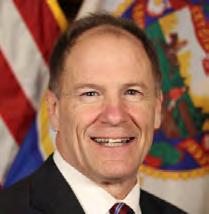
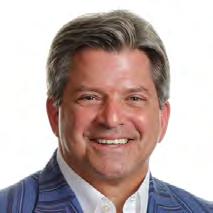

SHAWN BLOM, PARTNER IN THE SIOUX FALLS OFFICE OF BRADY MARTZ & ASSOCIATES
BRIAN KROSHUS, NORTH DAKOTA TAX COMMISSIONER
CONTINUED FROM PAGE 24
“Further, the best way to keep money in the pockets of citizens is to not collect it to begin with. In turn, those dollars can then make their way to main street businesses, directly stimulating and supporting our economy, rather than being channeled through state government.”
South Dakota does not have either individual or corporate income taxes. This fact supports its first-place national rank for corporate tax and its decade-long second place overall for business tax climate rank.
MICHAEL HOUDYSHELL, SOUTH DAKOTA DEPARTMENT OF REVENUE SECRETARY
PAUL MARQUART, MINNESOTA DEPARTMENT OF REVENUE COMMISSIONER
JAY HEFLIN, DIRECTOR OF TAX LEGISLATIVE AFFAIRS FOR EIDE BAILLY, LLP
“South Dakota’s primary source of state revenue is the sales tax,” said Secretary Michael Houdyshell of the South Dakota Department of Revenue. “In 2023, HB1137 was implemented by the legislature lowering the sales tax rate from 4.5% to 4.2%, effective July 1, 2023. This bill included a sunset clause which repeals the rate reduction on June 30, 2027. Additionally, SB 30 removed the 200 or more separate transaction criteria for remote sellers and marketplace providers, making it even less burdensome for those taxpayers to comply with South Dakota’s remote seller law. The Department of Revenue remains focused on providing unmatched customer service and working to support our mission of providing fair, efficient, and reliable revenue administration with our partners to help fund public services statewide.”
KAYCE HALLEY, PARTNER AT EIDE BAILLY LLP
Minnesota has a 9.8% flat corporate income tax rate; it is the highest in the nation. Its individual income tax rates rank among the highest at 42nd. The state had a $17.5 billion budget surplus when the legislature convened what was a prolific 2023 session. Many changes affecting business operations were made. Minnesota businesses will want to consult with their tax and business advi-
sors as these changes can be complex and, with few exceptions, apply to all businesses, regardless of size.
Some of the tax and regulatory changes affecting Minnesota businesses include: a gas tax increase that is indexed to inflation, a 50-cent delivery tax (with a small business threshold), increased motor vehicle sales tax and license tab fees, health insurance and electricity mandates, a payroll tax increase, a reduced deduction for net operating losses, increased taxation of dividends received within related ownership structures, the inclusion of global intangible low tax income (GILTI) in Minnesota income, and a net investment income tax (NIIT) for high net worth individuals, estates and trusts.
“Minnesota has a history of attention to the quality of life we foster for our residents. We work to provide a strong dependable workforce that our businesses can depend on, which business owners continue to say is important to them,” said Minnesota Department of Revenue Commissioner Paul Marquart. “In 2023, with our budget surplus and general revenue, we authorized significant financial support to families, education systems, workforce training, and communities. We also enhanced beginning farmer tax credits and increased ag property tax homestead exemptions. We increased the Angel Tax and Historic (Structure Rehab) Tax Credits, and we increased Local Government Aid (LGA) to cities and counties. Additionally, the tax code was amended to enable more pass-through entities (PTE) to make tax payment elections that reduce owner taxes.”
On the federal front, energy credits were expanded and increased through the Inflation Reduction Act, but the 2022 tax changes regarding the interest expense limitation, bonus depreciation reductions and the requirement to capitalize and amortize research and development expenses versus expensing them remain to be addressed. These 2022 changes, together with
the State and Local Tax (SALT) cap fiscally influence business operations.
“As a tax legislation advisor, I share insights on these fiscal constraints with Congressional staff through stories from my tax accounting experiences that are clear and simple to understand,” said Jay Heflin, director of Tax Legislative Affairs for Eide Bailly, LLP at the company’s national tax office in Washington, D.C.
“I explain that when money goes to the IRS it is not available to go to wages for employees and for reinvestment to make the company grow. This constraint is especially clear when looking at research and development costs where employers can afford to pay their employees because payroll
said. “With substantial individual income tax reductions from the 2017 TCJA expiring in 2025, the election this fall will be consequential for 2025 action on the tax code.”
“Helping companies to take full advantage of everything that the tax code allows is what we do at Eide Bailly LLP,” said Kayce Halley, a partner in the Fargo office of the multi-state firm.
“This means we have been actively supporting our clients in applying the breadth of federal energy credits that are available during the construction, remodeling, and equipping of their business buildings and
ciates, PC, which provides audit, tax, accounting and business advisory services in the tri-state region.
“Due to the current tax law change from expensing research and development costs to capitalizing them for amortization over a six-year period, we saw innovative companies face annual tax increases from hundreds of thousands to millions of dollars compared to the year before. Businesses had to determine how to finance these increases and some delayed expansion plans,” Blom explained.
“It is incongruent for policymakers to publicly encourage cutting-edge technology operations and manufacturers to stay in and return to America while simultaneously,



We agree with Governor Walz that by working together we can become the top state for business, and we look forward to continuing our partnership toward that goal.
Tim Carroll, global head of marketing and e-commerce at DigiKey.


DIGIKEY RECEIVED THE 2023 GOVERNOR’S INTERNATIONAL TRADE AWARD FOR LARGE COMPANIES FROM MINNESOTA GOVERNOR TIM WALZ. PICTURED ARE WALZ AND TIM CARROLL, GLOBAL HEAD OF MARKETING AND E-COMMERCE AT DIGIKEY.
DigiKey, a leading global commerce distributor offering the largest selection of technical components and automation products in stock for immediate shipment, announced today it has received the 2023 Governor’s International Trade Award for Large Companies from Minnesota Governor Tim Walz and the Minnesota Trade Office. It is the second time that the company has received this honor.
The Governor’s International Trade Award recognizes Minnesota companies that have shown exceptional progress and success in exports to foreign markets, as well as foreign-owned companies that have made significant economic contributions through their investments in the state. DigiKey was also a recipient of the award in 2012. “We appreciate our positive working relationship with the State of Minnesota and Minnesota DEED and are honored to be recognized for the work we’ve done to grow a thriving company and contribute to a thriving community,” said Tim Carroll, global head of marketing and e-commerce at DigiKey. “We agree with Governor Walz that by working together we can become the top state for business, and we look forward to continuing our partnership toward that goal.”
DigiKey employs more than 5,000 people, with more than 4,000 of those team members based in Minnesota, delivering up to 27,000 orders per day to customers in 180+ countries around the world. DigiKey does business in 27 different currencies and offers websites and content in 22 different languages. The company also established a Foreign Trade Zone (FTZ) in Thief River Falls, Minn., and the first small-package FTZ with all major carriers, Custom Border and Protection (CBP) and government entities. Since DigiKey received its first Governor’s International Trade Award in 2012, international sales have expanded by more than five times with 46% of sales taking place in the international market.







WEST FARGO, N.D. • Jason Nelson has been hired as an accountant at EPIC Companies of West Fargo. Jason is from Fargo, North Dakota, and went to Minnesota State Community and Technical College Moorhead with an associate’s degree in accounting. He is also working toward a bachelor ’s degree through the University of North Dakota starting in January 2024. As an accountant at EPIC, he tracks work orders, assists with billing hours, approves invoices, and enters accounts payable for the maintenance department.
Nate Althoff has been hired as a web developer. He is from Delano, Minnesota, and graduated from the University of Utah with a degree in Communications. As a web developer, he works on different websites and handles software-related tasks.
Madison Meinen has been promoted to senior marketing designer. Madison will design and oversee graphics for all departments within EPIC Companies. She is from Menomonee Falls, Wisconsin, and graduated from the University of Wisconsin-Whitewater with a degree in graphic design.
Andy Foss has been hired as an accounting assistant with CBE Construction of West Fargo. He will be responsible for accounts payable and assisting in various other accounting tasks. Andy is from Bismarck, North Dakota and graduated from the University of North Dakota with a marketing degree and sports business minor.
WEST FARGO, N.D. • Valor Contracting is pleased to announce the appointment of Jesse South to vice president. With over 20 years of experience, South joined Valor in 2022 and most recently served as the director of operations. An industry-leading industrial builder, Valor Contracting delivers client-focused solutions using the region’s most advanced build methods.

A graduate of North Dakota State College of Science, before joining Valor Contracting, South spent his career in Senior Project and Operation Manager roles, leading construction of some of the most premier resorts on the West Coast. Working alongside world-renowned architects and the nation’s largest general contractors, South brings essential value to the Valor team, clients and partners, with the ability to direct projects of any scope and size.
“Jesse is an integral part of our team and consistently demonstrates exceptional leadership skills, dedication and a deep understanding of our company’s values and goals,” said Michael Gullickson, President of Valor Contracting. “His transition to vice president will add to the strength of our leadership team.”
As vice president, South will continue to embrace industry advancements and contribute to shaping best practices that have established Valor Contracting as a nationally recognized and award-winning industrial builder.

WARROAD, Minn. • Marvin, a premium manufacturer of windows and doors, welcomes Val Johnson as senior vice president of human resources. Johnson joins the company’s senior leadership team and will guide the development of Marvin’s evolving human resources function.
“Marvin is first and foremost a people-centered organization,” said Paul Marvin, chief executive officer. “Val’s extensive experience in modernizing HR organizations will be a huge asset to Marvin as we manage changing workforce dynamics and continue to prioritize our employee value proposition.”
Johnson brings more than 25 years of human resources experience to Marvin, most recently having served as a vice president at Christensen Farms. She also previously held the role of vice president of human resources at Dressbarn, and prior, oversaw global HR initiatives at Best Buy.
At Marvin, Johnson will play a crucial role in shaping the future of Marvin’s HR priorities and the overall business. Her expertise in employee engagement and culture as central pillars of success will be significant advantages for Marvin’s growth and development strategies.
“I’m thrilled for the opportunity to support and help grow the immense talent already present at Marvin today,” said Johnson. “I’m also energized by the chance to help teams think differently and leverage human resources best practices to evolve this legacy organization for its next chapter.”

NationalEngineersWeek isagloballyrecognizedoccurrenceheldannuallyinFebruary.Celebratedthisyear,fromFebruary 18-24,itisoneofthelargestscience,technology,engineering,andmathematics(STEM)eventsthatcommemoratesthe outstandingachievementsofprofessionalsintheseindustries.
Since1938,KLJEngineering(KLJ)hasprovidedefficient,sustainable,andinnovativeengineeringservicesincommunities inwhichweliveandwork.Asemployee-owners,wedon'tjustcelebrateourengineersduringthisdesignatedweek,but daily,aspartofwhoweare.CheckouttheinsightsfromKLJ’sengineers,theirexperienceandwhatitmeanstobepartof ateamthatfosterscareergrowth,advancement,innovation,andcommunity.Wearealsoallemployee-owners,andas such,wedon’tjustcelebrateourengineersduringthisdesignatedweek,butdaily,aspartofwhoweare.

JasonReimer,PE (Innovation)
HydraulicGroupLeader Montrose,CO 15yearsofexperience
“Theengineeringindustryisevolvingrapidly.AtKLJ,wework hardtostayattheforefrontofthistransformation.We’reembracing cutting-edgeinnovationslikephotometricandLiDARdronesto capturedetailedimagery,andthedatawehavebeengatheringis trulyimpressive.Thisdataenhancesourengineeringdesigns, leadingtogreaterefficiencyandeffectiveness.Icanonlyimagine whatthefuturehasinstorefortheengineeringindustry.”

JessWagner,PE (Growth)
SeniorWaterandWastewaterEngineer
WestFargo,ND 18yearsofexperience
“Engineeringtrulyisalearningexperience.Evenatthisstage ofmycareer,IamalwayslearningsomethingnewatKLJand that’soneofthereasonsthatengineeringmakesanexcellent professionalpath.Youshouldbewillingtoadaptwithtechnology andembracechange,challenges,andkeepinmindthatthereis morethanonewaytosolveaproblemtobesuccessful.”

RyanBlumer,PE (Community)
AssociateProjectManager
Kalispell,MT 4yearsofexperience
“KLJprovidestheopportunitytoserveandmakeadifference inmycommunity.Oneofmyfavoriteprojectswasworkingon theKalispellParklineproject.Thiscreatedashared-usepath inthedowntownareaofthecityforpedestriansandbicyclists thatprovidesrecreation,butalsoatransportationalternative. Ithasspurredgrowthinthecommunityandbroughtnew development,andinterestintothearea.Beinganengineer isextremelyrewardingonceyouseehowprojectsyouhave workedonpositivelyimpactthepublic.”

JoeDeVore,PE (Advancement)
TrafficSupervisor Eagan,MN
12yearsofexperience
“Pursuingacareerinengineeringcanreallypushyouto acceleratenewprojectideas,andthedoorisopento developingandreimaginingmethods.Ibelievethatfuture generationsandKLJwillcontinuetoimplementnewsafety elements,supportinfrastructuredemands,andprovide importantprojectneedsthroughouttheengineeringindustry.”

TonyaHuber,PE (Collaboration)
SeniorProjectManager RapidCity,SD
26yearsofexperience
“Clientrelationships,collaboration,communicationand problem-solvingareespeciallyimportantatKLJandthe engineeringindustry.Thesetoolshavehelpedmeovercome challengesandestablishinnovativesolutionsforprojects includingfundingoptionsandgrantopportunities.Iworka lotwithTribalclientsandseeingthecommunitiesthrive andgrowisagreataccomplishmentandhighlyrewarding inmycareer.”


FARGO, N.D. • Curtis Crowe has joined Apex Engineering Group as a survey crew chief with 10 years of civil engineering technology experience. Curtis’ work experience comes from his time at the Cass County Highway Department and NDDOT. He has an associate’s degree in Land Surveying and Civil Engineering Technology from the North Dakota State College of Science.
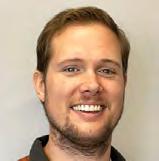

ST LOUIS PARK, Minn. • KLJ Engineering LLC
(KLJ), is pleased to welcome Brigid Gombold to our St. Louis Park, Minnesota office.
Gombold joins our team as a senior environmental specialist and has nearly 30 years of experience working in the environmental and transportation sectors. She has expertise working on the National Environmental Policy Act (NEPA) and Minnesota Environmental Policy Act (MEPA) environmental regulations. Additionally, she earned a bachelor’s degree in environmental studies from Bemidji State University.

During her tenure at the Minnesota Department of Transportation (MnDOT), Gombold worked on large-scale highway projects as MnDOT’s Metro District lead NEPA specialist, successfully guiding many critical environmental documents, including environmental assessments (EAs) on large projects.
Gombold was an instrumental team member who assisted in establishing MnDOT’s Planning and Environmental Linkages (PEL) program and aided in the implementation of the program on Metro PEL Studies. She looks forward to using her expertise across the KLJ footprint to assist clients in navigating the NEPA process, beginning with project planning through design.
KLJ is excited to welcome Gombold to the firm and looks forward to her contributions to the company’s continued success positively impacting environmental needs and services.

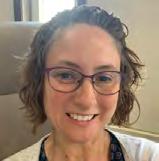
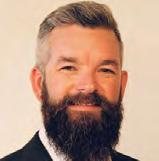
Interstate Engineering is excited to announce the addition of multiple team members to the organization, expanding surveying and engineering services across the Great Plains Region.
HORACE, N.D. • Interstate Engineering is pleased to welcome Zach Robinson to the Horace office. As a survey party chief, he joins the team with an Associate of Applied Science Degree in Land Surveying and Civil Engineering Technology from North Dakota State College of Science. His knowledge and drive to succeed will make him a valuable addition to the firm.
JAMESTOWN, N.D. • Interstate Engineering is proud to welcome Jaeger Dreher to the Jamestown office. After testing the waters as an intern, he recently joined the team fulltime as a Field Technician. His knowledge and drive to succeed will complement the growing team.
WAHPETON, N.D. • Interstate Engineering is excited to announce the addition of Robyn Opatril to the Wahpeton office. As a CADD Technician, she joins the team with an
Associate Degree in Mechanical Drafting from North Dakota State College of Science. The combination of her knowledge and over 20 years of experience will serve the growing Interstate Engineering team well.
WILLISTON, N.D. • Interstate Engineering is pleased to welcome Kristina Zimmerman as the Administrative Assistant for the Williston office. She joins the team with a Bachelor of Science Degree in Business Administration, Corporate Finance, and General Management from Central Michigan University. With over 20 years in the administrative field, her depth of experience and knowledge will complement Interstate Engineering’s growing team.
FERGUS FALLS, Minn. • The Fergus Falls office recently added Kris Klemenhagen to the team. As a Senior Project Manager, he brings over 26 years of experience to the firm. He specializes in survey technology, CADD drafting, and site observation. His experience, along with his depth of knowledge, will be valuable assets to the team.

DULUTH, Minn. • Essentia Health is pleased to announce Dr. Gratia Pitcher as the new chief medical officer. Dr. Pitcher has served as interim CMO since October and has been with Essentia since 2015.
Her passion for patient-centered care and her leadership in achieving the Quadruple Aim (improving population health, enhancing the patient experience, reducing costs and improving provider satisfaction) make her a valuable member of Essentia’s leadership team.
“Dr. Pitcher has consistently demonstrated her ability to gain the perspectives and trust of her colleagues to advance the care of the patients we are privileged to serve,” said Dr. David Herman, Essentia’s CEO. “She is the right clinical leader during this time of tremendous change in health care, and we are proud to have her in this important leadership role.”
As chief quality and patient safety officer since May 2020, Pitcher has helped Essentia improve our state and national quality ratings. For example, Essentia tied for the top spot in the most recent Minnesota Health Care Quality Report from Minnesota Community Measurement, scoring above statewide averages on 13 of 21 clinical-quality measures. Only one other system achieved high-performing status in 13 measures. Similarly, three Essentia hospitals — St. Mary’s Medical Center, Essentia Health-Duluth and Essentia Health-Fargo — earned five-star ratings from the Centers for Medicare and Medicaid Services in 2023. A five-star rating is the highest possible score and places these hospitals in the top 10.4% nationwide.
“I am honored to be offered this position,” said Pitcher. “I remain committed to ensuring our patients have access to the highest quality of care, our colleagues have the best work experience and that all of us work toward our mission and make our values visible. I believe all great ideas originate from conversations we have with our closest colleagues. I look forward to those conversations and developing ideas that emerge from them as we make a healthy difference in our patients’ lives and our own lives.”
Pitcher earned her medical degree from the Medical University of Ohio, which is now the University of Toledo. She completed a residency in internal medicine from the Michigan State University Kalamazoo Center for Medical Studies. She expects to earn her master’s degree in business administration in May from the University of Wisconsin. She is certified by the American Board of Internal Medicine.



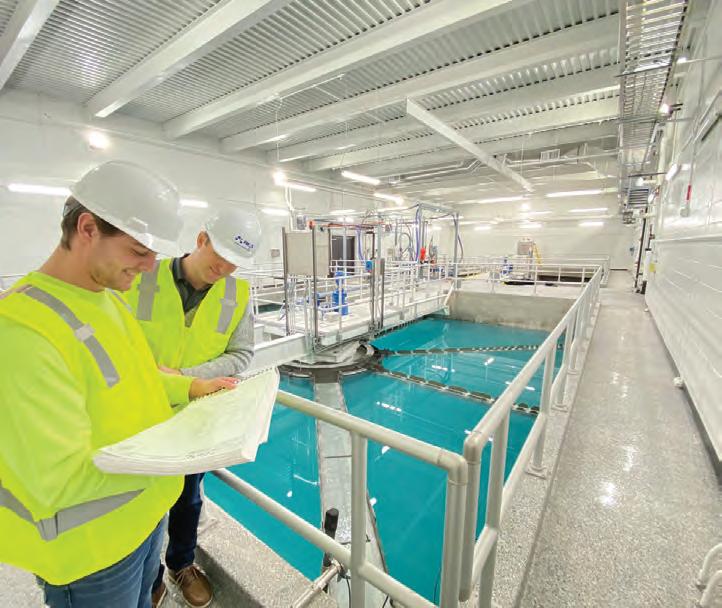


The most effective way we have used to empower our team is by trusting them and the work they perform, along with providing them with guidance and support to achieve the best results for our clients and Ackerman-Estvold.
The principal owners started this company with the intentional focus on hiring the right people to fit our team and culture, based on their knowledge, education, and skills. By doing this we have made sure we have the “right fit” from the beginning and give clear expectations that our employees are in charge of their work, and we trust in their ability to excel in their role. This does not mean we are expecting perfection – we are willing to help mentor and give advice through projects and processes from our experience – but we want our staff to know that we trust them. It is why we selected them for our team.
Having this expectation at the beginning of employment truly provides some built-in accountability to our team members. By being trusted to do the work and make decisions, you are more invested in the outcome, and you do a self-check.
If you don’t have any ownership in the outcome or decisions the day-to-day work seems like a process or task, and you don’t look at something as wholistically as you would when you have a vested interest in the outcome. We want employees to know they are the team and want them to be successful in their professional and personal goals. That’s what it means to be Ackerman-Estvold.
Empowerment is a core value that’s been woven into our team since day one. By inviting team members to share in Enclave’s vision and contribute to meaningful work, we cultivate a culture of curiosity and accountability. We encourage team members to shape their space within our team, supporting them with open communication, trust and leading by example, and recognize their growth as Enclave’s growth.
Tricia SchillDirector of Human Resources
Enclave Companies
West Fargo,
N.D.


Although there are many different strategies to building a culture of empowerment and accountability, I will outline a few of the strategies that have been instrumental in shaping the culture at DigiKey. That said, it is important to acknowledge that shaping a workplace environment of personal responsibility is always an ongoing process.
At DigiKey, we believe that empowerment and accountability start with leadership. It is the role of leaders to set the tone for the organization’s culture, whether by modeling accountability or striving to empower those around them, ultimately resulting in greater outcomes. Our leaders are outstanding in demonstrating their dedication to our team and organization. As our company has grown, so has the importance of effective communication. Clear expectations play a huge role in empowerment. We have established new channels of communication to transparently share our organizational goals, progress, challenges, and celebrations. Clarity in communication is crucial to help team members at all levels of the organization personally connect to their work. That engagement is critical for high-performing organizations.
A key strategy for fostering accountability involves frequent feedback and recognition. Team members want to know somebody recognizes who they are, acknowledges what is important to them, and notices how they are performing. We pride ourselves on consistent feedback through multiple avenues. This has driven and reinforced a positive and responsible culture for team members and leadership alike.
Sometimes we need to check in on how we are doing and stay committed to improvement in creating an impactful culture at DigiKey. Cultivating an environment of empowerment and accountability can sometimes be challenging, but it is ultimately rewarding in many ways for our people and our business.
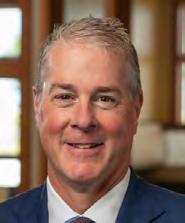 Jeff Thomas President Cornerstone Bank Fargo, N.D.
Jeff Thomas President Cornerstone Bank Fargo, N.D.
 Shane Zutz
Vice President, Human Resources
DigiKey Thief River Falls, Minn.
Shane Zutz
Vice President, Human Resources
DigiKey Thief River Falls, Minn.
We value empowered employees, giving them the authority and confidence to make decisions. That’s a Cornerstone Bank value that we live every day.
With locations across North Dakota and South Dakota, the communities we serve are unique and therefore need to be cared for accordingly. As a result, we hire local talent and empower them to help and guide our customers to financial success.
Accountability is as important at Cornerstone as financial acuity. Our team members have the power to make decisions while helping customers. Because those decisions are based on expertise, team members know they have the backing of the bank.
We build this culture of empowerment and accountability through continuous learning and improvement. Our team members have regular one-on-ones with their direct supervisor. We provide weekly training on technical and soft skills to help our teams better help their customers. Our leadership development and mentorship programs as well as active development plans help team members advance in their careers. Regularly scheduled team and all staff meetings ensure the goals of each team member are in line with the goals of the organization. We also have scorecards in place to monitor the progress toward those goals.
All of these things are great tools to support our culture of empowerment and accountability. However, the greatest tool of all is our incredible staff whom we trust to make decisions.

Here at the Dakota Credit Union Association, we openly discuss, encourage and practice accountability and empowerment through trust, our core values and mission, along with daily, quarterly, and annual strategies and objectives.
• Trust: We are a small, but mighty team. At our organization, empowerment and accountability starts with trust and establishing strong professional relationships. Because we serve two states, North Dakota and South Dakota, we also cover a large geographic space. Our team members have to function with a degree of autonomy, which in itself empowers them to be fully engaged in an independent work environment.
 Jeff Olson
President and CEO
Jeff Olson
President and CEO
Dakota Credit Union Association Bismarck, N.D. and Sioux Falls, S.D.
• Core Values and Mission: As a member-driven professional trade association, it’s imperative that our staff believes in our core mission and consistently practices returning value to our stakeholders. There is no “diffused responsibility” – and this has resulted in team members taking responsibility for what they do. More importantly, as a not-for-profit organization, our team is fully engaged in providing value to our membership. Each person’s outcome is proof of their appreciation of the value of the work they do and how their individual roles impact a positive outcome for our stakeholders.
• Strategic Tasks and Objective Based: An effective strategy for us has been utilizing a “tasks and objective based” approach. Outlining clear, realistic, and achievable objectives has helped to create confidence in our team members to successfully meet and exceed expectations. Recognizing successes and performance outcomes provides additional engagement.
• Providing Solutions: Our mission here is pretty simple; we’re in business to help our association’s members succeed. We empower our team to solve problems by offering solutions for our stakeholders, often before they experience an actual industry-related obstacle. We like to think of ourselves as “pain relievers” for our members. I’m truly amazed at how energized and creative people can be when you give them ownership, confidence and resources to be servant leaders.
• Professional Development and Personal Values: As a smaller organization, it’s certainly easier to get to know each team member personally. In my leadership role, understanding their unique personal values and professional goals helps in mentoring and guiding their individual development and growth within the organization. It also supports and solidifies the value proposition each brings on a daily basis.
• Ownership: Finally, allowing team members to own their department’s strategic goals as well as taking ownership in our overall organizational goals not only nurtures innovation; it allows individuals to grow both personally and professionally. Fostering a supportive environment where they can continually and successfully contribute develops long-term loyalty and deeper empowerment.
Youdon’t hireengineerswhoare “goodenough.” Youhirethe very best. Incidentally,sodowe.





Total nonfarm payroll employment increased by 216,000 in December, and the unemployment rate was unchanged at 3.7 percent, the U.S. Bureau of Labor Statistics reported. Employment continued to trend up in government, health care, social assistance, and construction, while transportation and warehousing lost jobs. The number of long-term unemployed (those jobless for 27 weeks or more), at 1.2 million,was little changed in December and over the year. The long-term unemployed accounted for 19.7 percent of all unemployed persons in December.
The labor force participation rate, at 62.5 percent, and the employment-population ratio, at 60.1 percent, both decreased by 0.3 percentage point in December. These measures showed little or no change over the year. Among the major worker groups, the unemployment rates for adult men (3.5 percent), adult women (3.3 percent), teenagers (11.9 percent), Whites (3.5 percent), Blacks (5.2 percent), Asians (3.1 percent), and Hispanics (5.0 percent) showed little change in December.
Government employment increased by 52,000 in December. Employment continued to trend up in local government (+37,000) and federal government (+7,000). Government added an average of 56,000 jobs per month in 2023, more than double the average monthly gain of 23,000 in 2022. Health care added 38,000 jobs, social assistance rose by 21,000, mostly in individual and family services (+17,000), and construction employment continued to trend up (+17,000).
In December, average hourly earnings for all employees on private nonfarm payrolls rose by 15 cents, or 0.4 percent, to $34.27. Over the past 12 months, average hourly earnings have increased by 4.1 percent. In December, average hourly earnings of private-sector production and nonsupervisory employees rose by 10 cents, or 0.3 percent, to $29.42.
Source:









Howmuchmoneydoyoulose
Carrierdiversity–havingtwodifferentservice providers–ensuresyoualwayshaveinternet accessandreducescostswhileincreasing flexibility.

Since1996,DakotaCarrierNetworkhasbeena



Wanttolearnmore?Callusat800-814-3333or






















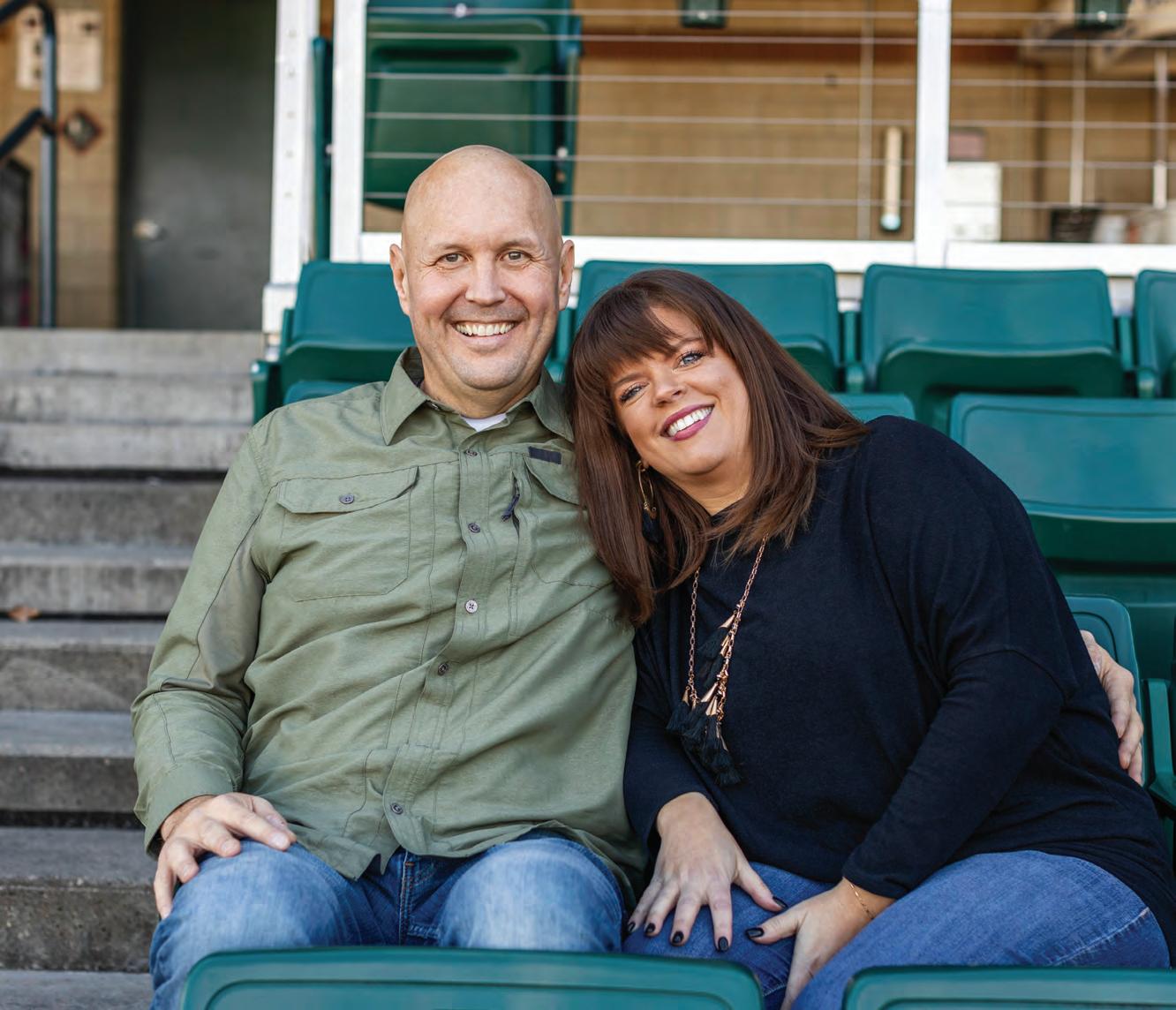
MeetMorgan.He’sonlyinhisforties,butwithafamilyhistoryofheartdiseasehiswifeurgedhim togetaheartscreeningatEssentiaHealth.Totheirshock,heneededtriplebypasssurgery despitehavingnosymptoms.Today,Morganishealthyandgratefulforsecondchances.
LearnmoreaboutyourrisksbytakingourheartassessmentatEssentiaHealth.org/MyHeart.
Heart&VascularCenter
701-364-BEAT
EssentiaHealth.org